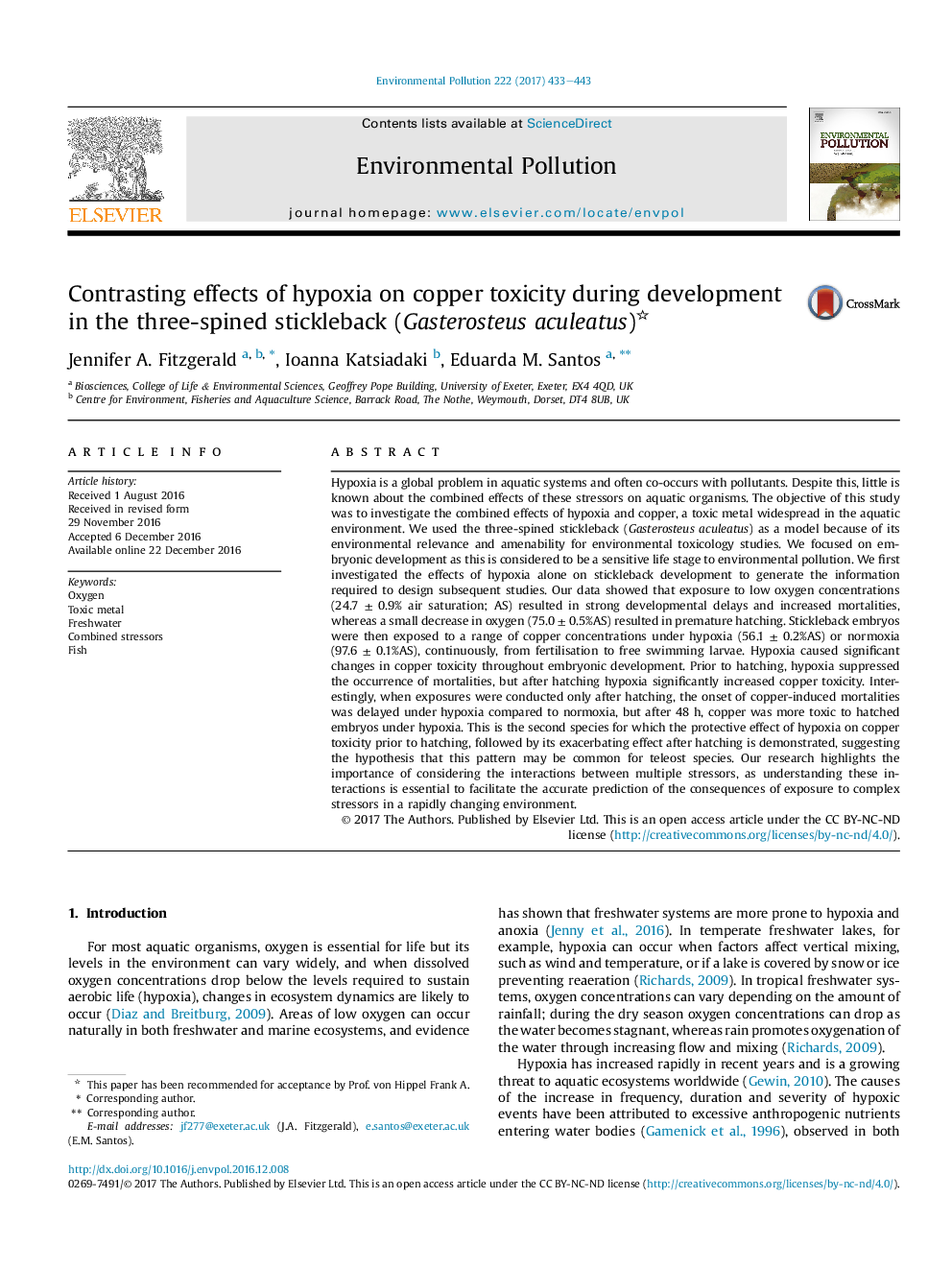| کد مقاله | کد نشریه | سال انتشار | مقاله انگلیسی | نسخه تمام متن |
|---|---|---|---|---|
| 5749038 | 1619151 | 2017 | 11 صفحه PDF | دانلود رایگان |

- Exposure of stickleback embryos to low oxygen resulted in concentration dependent developmental delays.
- Hypoxia caused significant changes in copper toxicity throughout development.
- Prior to hatching, hypoxia protected embryos from copper toxicity.
- After hatching hypoxia increased copper toxicity.
Hypoxia is a global problem in aquatic systems and often co-occurs with pollutants. Despite this, little is known about the combined effects of these stressors on aquatic organisms. The objective of this study was to investigate the combined effects of hypoxia and copper, a toxic metal widespread in the aquatic environment. We used the three-spined stickleback (Gasterosteus aculeatus) as a model because of its environmental relevance and amenability for environmental toxicology studies. We focused on embryonic development as this is considered to be a sensitive life stage to environmental pollution. We first investigated the effects of hypoxia alone on stickleback development to generate the information required to design subsequent studies. Our data showed that exposure to low oxygen concentrations (24.7 ± 0.9% air saturation; AS) resulted in strong developmental delays and increased mortalities, whereas a small decrease in oxygen (75.0 ± 0.5%AS) resulted in premature hatching. Stickleback embryos were then exposed to a range of copper concentrations under hypoxia (56.1 ± 0.2%AS) or normoxia (97.6 ± 0.1%AS), continuously, from fertilisation to free swimming larvae. Hypoxia caused significant changes in copper toxicity throughout embryonic development. Prior to hatching, hypoxia suppressed the occurrence of mortalities, but after hatching hypoxia significantly increased copper toxicity. Interestingly, when exposures were conducted only after hatching, the onset of copper-induced mortalities was delayed under hypoxia compared to normoxia, but after 48 h, copper was more toxic to hatched embryos under hypoxia. This is the second species for which the protective effect of hypoxia on copper toxicity prior to hatching, followed by its exacerbating effect after hatching is demonstrated, suggesting the hypothesis that this pattern may be common for teleost species. Our research highlights the importance of considering the interactions between multiple stressors, as understanding these interactions is essential to facilitate the accurate prediction of the consequences of exposure to complex stressors in a rapidly changing environment.
269
Journal: Environmental Pollution - Volume 222, March 2017, Pages 433-443